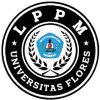CAMPUR KODE DAN ALIH KODE PADA PEMBELAJARAN BASIC ENGLISH BAGI MAHASISWA/I DI LABUAN BAJO
DOI:
https://doi.org/10.37478/jpm.v4i3.2363Abstract
This research aims to describe the application of code-mixing and code-switching as one of English learning methods in Politeknik eLBajo Commodus, particularly in Basic English Class. The method of this research is field observation during the time of Basic English. Several example speeches which contain code-mixing and code-switching during the class are used as the data. The data is then analyzed by the theory to find out the contexts and types of code-mixing and code-switching that happened in the Basic English Class. The result shows that code-mixing is used in some contexts, such as in welcome greeting, small talk before the class starts, to open the lecture, while giving the lecture, and interact with each other in the class. All those are outer code-mixing. As for code-switching, there are situational and metaphoris code-switching, and both in insertion and alternation. The code-switching is used when the students still use bahasa Indonesia more often. When there are students that do not understand the questions, and as a translation from bahasa Indonesia, if needed, code-switching is applied. This research shows that the code-mixing and code-switching can be used as English teaching method and the lecturer must control the use itself so that English is still being the main language in the English class.
Downloads
Keywords:
Code-mixing, Code-switching, English learningReferences
Akhrani, L. A., & Azhar, M. (2021). Wisata Super Premium Labuan Bajo: Mengkaji peran langsung dan tidak langsung terhadap Visiting intention ditinjau dari Destination Image dan Tourist expectation. Personifikasi: Jurnal Ilmu Psikologi, 12(1), 1-20. https://doi.org/10.21107/personifikasi.V12i1.8382
Aziza, N. (2020). The Importance of English Language. INTERNATIONAL JOURNAL ON ORANGE TECHNOLOGIES (IJOT), 2(1), 22–24. www.researchparks.org
Crystal, D. (2003). English as a global language, Second edition. UK: Cambridge University Press. Google Scholar
Delahunty, G. P., & Garvey, J. J. (Eds.). (2010). The English language: From sound to sense. Parlor Press LLC. https://wac.colostate.edu/docs/books/sound/sound.pdf
Fitamala Sari, N. (2022). Code Switching and Code Mixing In Classroom Presentation of Indonesian EFL Students. EDUCASIA, 7(2), 91–120. www.educasia.or.id
Gusti, I., Agung, A., & Susanthi, D. (2021). KENDALA DALAM BELAJAR BAHASA INGGRIS DAN CARA MENGATASINYA. Linguistic Community Service Journal, 1(2, Februari 2021), 1–7. https://doi.org/10.22225/licosjournal.v1i2.2658
Kiwang, A. S., & Arif, F. M. (2020). Perubahan Sosial Ekonomi Masyarakat Labuan Bajo Akibat Pembangunan Pariwisata. Gulawentah: Jurnal Studi Sosial, 5(2), 87. https://doi.org/10.25273/gulawentah.v5i2.7290
Mandang, M., Kalangi, L. M. V., & Tulung, G. (2018). Penggunaan alih kode instruktur dalam proses belajar mengajar bahasa inggris di ELC Education Manado. Kajian Linguistik, 6(2). https://doi.org/10.35796/kaling.6.2.2018.24769
Murdiyanto, E. (2020). PENELITIAN KUALITATIF (1st ed., Vol. 1). UPN “Veteran”Yogyakarta Press. http://eprints.upnyk.ac.id/24095/1/Penelitian%20Kualitatif%20-Eko%20mUrdiyanto.pdf
Pratama, P. A. (2022). Code Switching and Code Mixing in English Language Learning during Online Learning in Covid-19 Outbreak. Jurnal Pendidikan Bahasa Inggris undiksha, 10(1). https://doi.org/10.23887/jpbi.v10i2.44772
Raza, D., Latif, A., & Raza, W. (2022). Role of Code-Switching and Code-Mixing in Improving L2 Leaners’ Target Language Speaking Skill in Multilingual Settings. International Research Journal of Education and Innovation, 3(2), 1–16. https://doi.org/10.53575/irjei.v3.02(22)1.1-16
Riadil, I. G., & Dilts, N. (2022). ENVISAGING CODE-MIXING AND CODE-SWITCHING IN ENGLISH CONVERSATION AMONG THAI STUDENTS: BREACHING THE MOTIVES FROM SOCIOLINGUISTIC PERSPECTIVES. International Journal of Humanity Studies (IJHS), 6(1), 139–154. https://doi.org/10.24071/ijhs.v6i1.5216
Silaban, S., & Marpaung, T. I. (2020). An Analysis of Code-Mixing and Code-Switching Used by Indonesia Lawyers Club on TV One. JETAFL (Journal of English Teaching as a Foreign Language), 6(3), 1–17. https://ejournal.uhn.ac.id/index.php/jetafl
Sugiarto, A., Agung, G., & Mahagangga, O. (2020). Jurnal Destinasi Pariwisata Kendala Pengembangan Pariwisata di Destinasi Pariwisata Labuan Bajo Nusa Tenggara Timur (Studi kasus komponen produk pariwisata). Jurnal Destinasi Pariwisata, 8(2, 2020), 18–25. https://doi.org/10.24843/JDEPAR.2020.v08.i01.p03
Van den Bogaerde, B., & Baker, A. (2005). Code mixing in mother–child interaction in deaf families. Sign language & linguistics, 8(1-2), 153-176. Google Scholar
Wardhaugh, R., & Fuller, J. M. (2015). An introduction to sociolinguistics. Sixt edition. UK: Wilay Blackwell. Google Scholar
Zahra, A. M., Anggraeni, M., & Wahyuni, I. (2022). ALIH KODE DAN CAMPUR KODE DALAM PODCAST CATATAN NAJWA BERSAMA MAUDY AYUNDA. Jurnal Ilmu Komunikasi Dan Media Sosial, 2(3), 124–134. https://doi.org/10.47233/jkomdis.v2i3.229
Downloads
Published
How to Cite
Issue
Section
License
Copyright (c) 2023 Katarina Noviming Sakura

This work is licensed under a Creative Commons Attribution-ShareAlike 4.0 International License.













